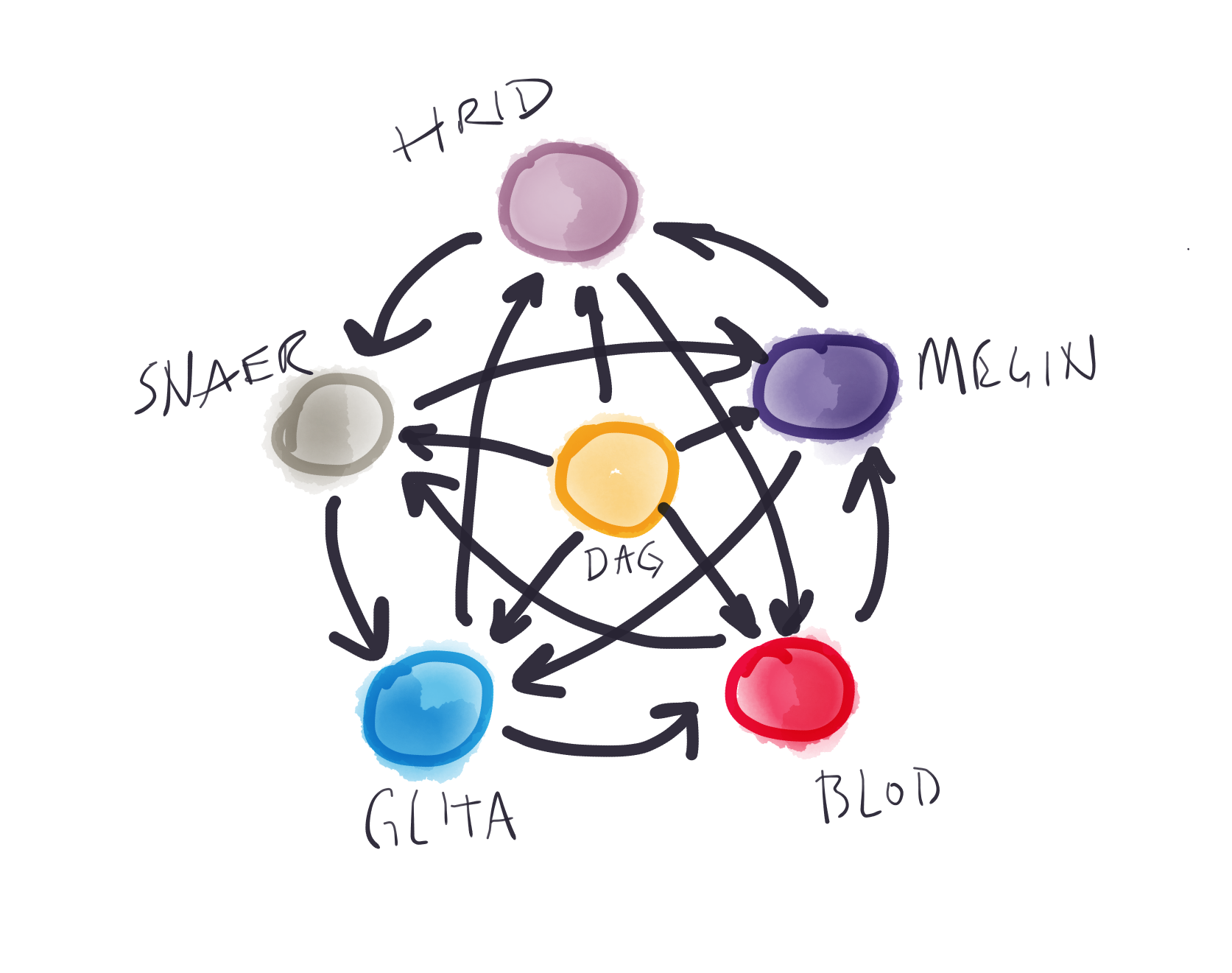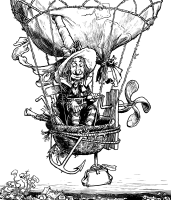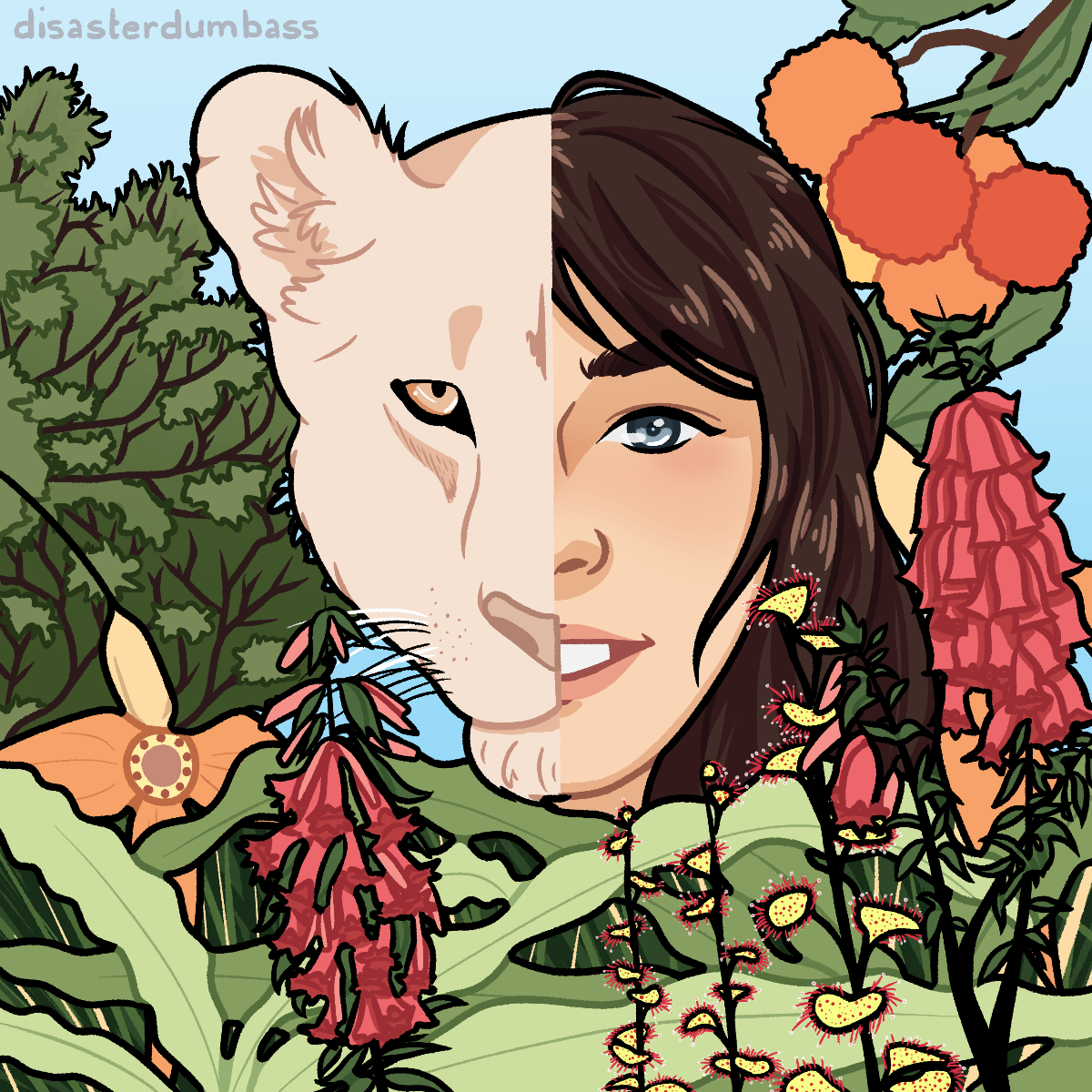Stjarna
Snaer. Hrid. Megin. Blod. Glita. Dag!
Overview
For those who keep the old faith, those who spread the tales and the teachings of the The Daystar and her five most favored daughters, Stjarna is a tool for prophecy and revelation, a method of bringing focus to troubled thoughts, a path toward insight. For the somewhat less faithful, Stjarna is the most popular dice game in Liggjavard./* in The Reaches? */
The dice are cubes with a different symbol on each face, representing the six goddesses familiar to all.The Sacred
The priests and devout of Dagstjarna and her daughters will cast the cubes to interpret the future.To Unveil the Future
It is the custom to use one cube for each participant in the ceremony who wishes an answer to the same question. No follower of Dagstjarna would dare ask more than one question during a single ceremony, but the more of the sacred cubes used in the ceremony, the more nuanced the answer is believed to be. When facing complex troubles, the group must agree the right mix of cubes and questions to get the best outcome. The most senior cleric present will ask the question in front of the altar with great reverence, then gather the cubes from the attendees, and cast them upon the altar.Interpretations Vary
The positions in which the cubes fall is considered to be a message from Dagstjarna herself. The assembled priests will put their wisdom to the test, determining the will of their beloved goddesses. The sides facing up represent the primary answers, the sides facing the questioners or other cubes can provide more depth. The arrangement of the cubes after the throw also comes into play. It is a rare cast that declares the same answer to all - arguments about the correct interpretation of the divination can last for days.The Symbols
Dag
The Sun, Light, CreationThe element of Magic
Symbol: the sun
Snaer
Cold, Dark, TrickeryThe element of Void
Symbol: a snowflake
Glita
Life, Growth, OrderThe element of Earth
Symbol: an orb
Hrid
Power, Chaos, DangerThe element of Water
Symbol: a cloud
Megin
Strength, Victory, WarThe element of Fire
Symbol: a sword
Blod
Knowledge, Death, DiscoveryThe element of Air
Symbol: a book
The Profane
Barflies and gamblers from Tecaltemoc to Hyvamaa recognize the same sacred cubes as the dice used for their favorite drinking game!Basic Rules
Each player brings their own Stjarna die with them. (Everyone who plays will have a favorite, the one that is luckiest for them!) The players prepare by sitting around a table, drinks and coins near to hand. Each player pushes forward 1 or 3 coins, depending on how bold they are feeling. The players chant the names of the goddesses, rolling the dice on the last name.Snaer. Hrid. Megin. Blod. Glita. Dag!The dice win or lose against each other in sequence as described below. If there is a sequence of symbols that result in a clear winner, that person takes the coins. If there is a circular result or a tie, then the coins stay on the table and the players play another round. If someone rolls Dagstjarna, that player takes a drink and their coins stay in the middle of the table until the next round. Play typically continues until someone has all the money (perhaps the innkeeper) or everyone is too drunk to keep going. There are dozens of regional variations, special exceptions, and house rules, depending on where you play Stjarna. A new player in town should always confirm the local rules before sitting down at the table.
Victory
| Beats | Loses to | |
|---|---|---|
| Snaer | Megin Glita |
Blod Hrid |
| Hrid | Blod Snaer |
Megin Glita |
| Megin | Hrid Glita |
Blod Snaer |
| Blod | Megin Snaer |
Hrid Glita |
| Glita | Blod Hrid |
Megin Snaer |
| Dag | DRINK! |
Relations between sacred and profane players
How do the priests feel about people gambling with their holy symbols? Well, Dagstjarna hasn't shown any signs of disapproval. And when traveling, priests of Dagstjarna often do well at the tables. Overall, they get along just fine.Related Articles
In Game Terms
DRAFT
This article is currently a work in progress and may be incomplete or subject to change.
Remove these ads. Join the Worldbuilders Guild














I really like how this is unique but familiar enough that its easy to understand. There was one bit that might need some clarification or maybe I'm just having a brain fart. When you say the game continues until one person has all the money or people are too drunk does this mean people can leave the game? Or do they have to stay there? Can people by in like in poker or is the game restricted to the group who starts it?